The Top End
We spent about a month visiting the Top End including 3 National Parks in the area. We certainly felt the heat! Katherine is dry, cool at night and then sitting around 37C (98F) all day. But the humidity in Katherine is only around 45%. Further north, the temperature rises to sit around 40 – 42C (105-110F) but the humidity is around 80% – very uncomfortable!!
Katherine
All roads lead to Katherine. It is the junction for the highway heading north/south and to the west. It’s a very busy town. Apparently, it has the busiest supermarket in all of Australia – which we found out the hard way after it was listed as a COVID exposure site. The main attraction in the town is Katherine Gorge (Nitmiluk). The gorge is actually a series of connected gorges. You can do a boat tour of the first two, kayak tours of the next few and there’s a huge 79km walk you can do to visit all the gorges. Needless to say, due to our limited budget and the heat, we did none of these things… Instead, we took a walk to the top lookout over gorge 1.
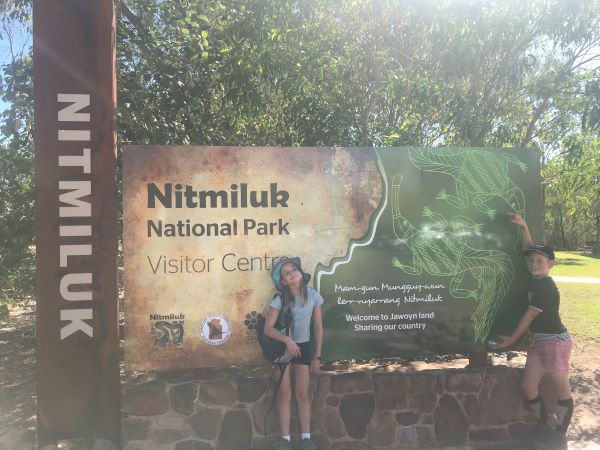
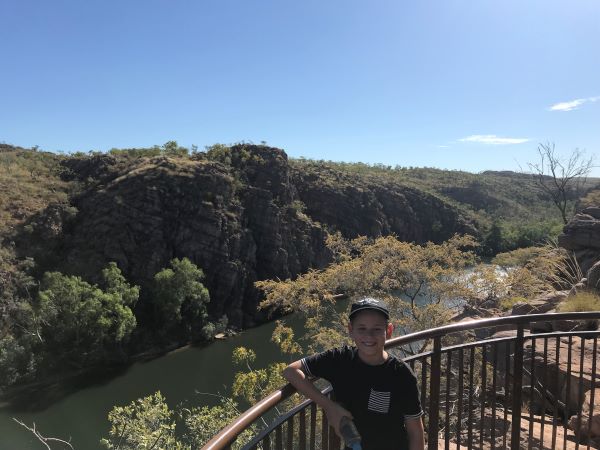
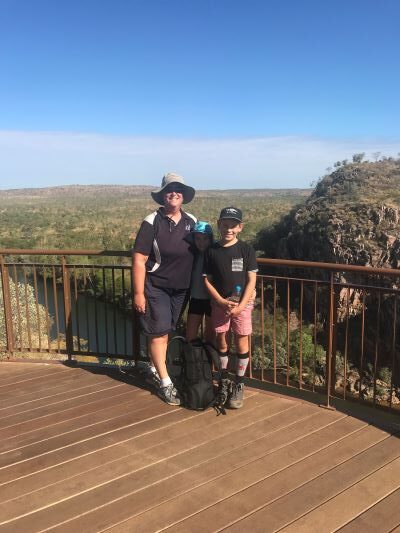
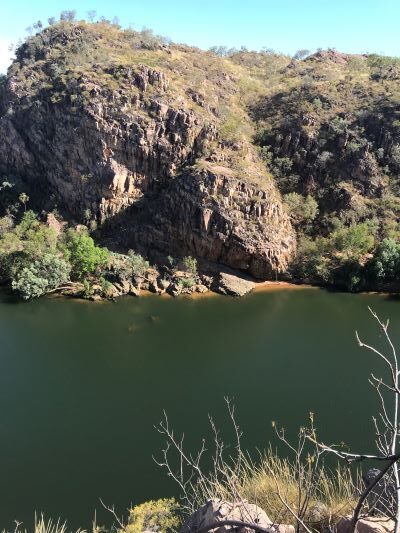
The trees around the gorge were absolutely covered in bats (‘flying foxes’). They were screeching loudly… and then there’s the smell…
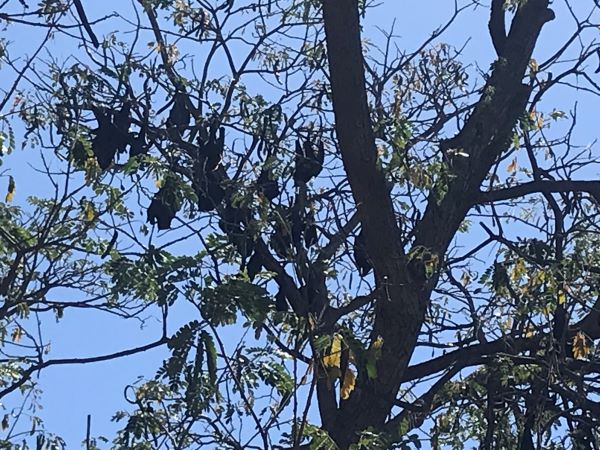
After the first 5 days that we were in Katherine (mostly working/schooling), we were suddenly subjected to a snap lockdown as an infected Covid guy visited the Katherine supermarket. We weren’t allowed to leave the caravan park except to go food shopping or to the doctor, and had to wear masks to the toilet and to walk around the caravan park (not the best in the heat). We thought that we looked like surgeons walking around the caravan park at night:

Kakadu National Park
As soon as we were released from lockdown (literally 1/2 hour later) we took off to Kakadu National Park. The park is huge – the driving distances to see everything are very long. We stayed the first 2 nights at this great, centrally located camping spot that had flushing toilets and hot showers as well as a beautiful little billabong. Unfortunately, there are saltwater (and freshwater) crocodiles everywhere around here so you can’t go into the water.
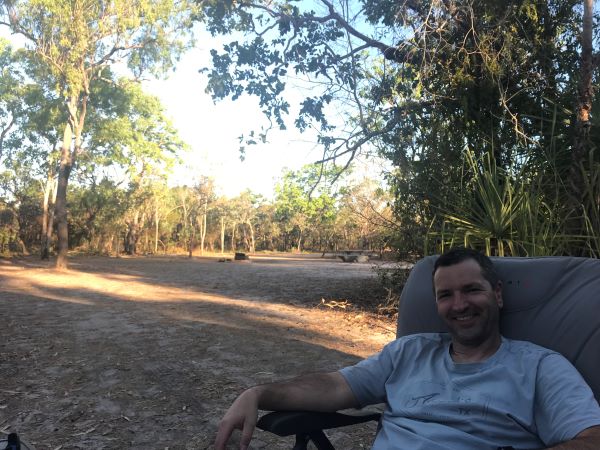


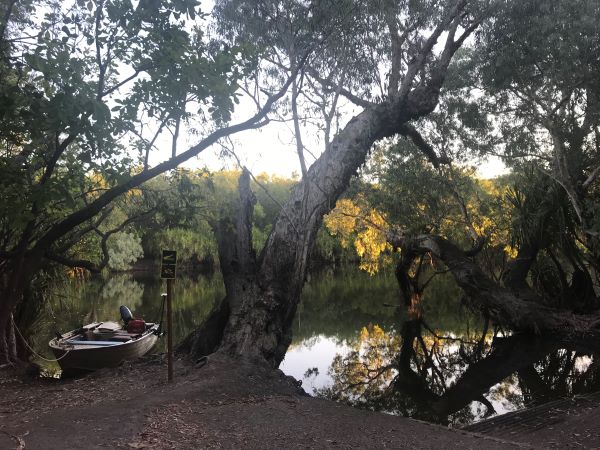
We spent the third night in a town called Jabiru in a caravan park with a swimming pool so that we would be closer to visit Ubirr and Mamukala wetlands.
Warradjan Aboriginal Cultural Centre
This cultural centre was a really great way to start our visit to Kakadu. It explained a lot about the local aboriginal culture. Unfortunately, you are not allowed to take any photos so I can’t share them with you. But, I did take a photo of the aboriginal seasons for Kakadu. There are 6 seasons as you can see in the photo below.
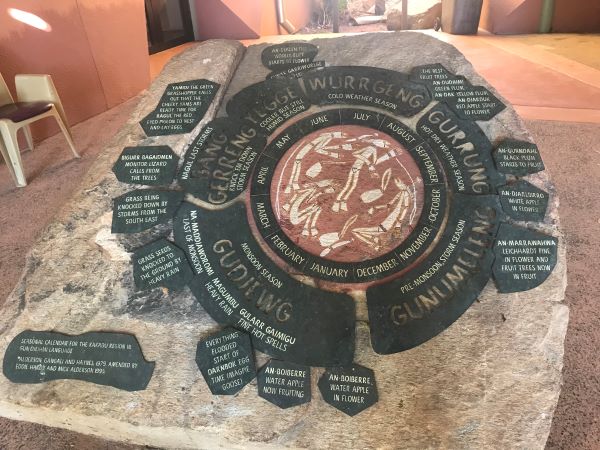
We were visiting at mid-end August during the Gurrung season – hot and dry. So much of the aboriginal culture (and rock art) are associated with the various seasons and when you can hunt and collect what – each season is different.
Nourlangie and Ubirr Rock Art
One of the main things to see in Kakadu which gives it its world heritage listings is the ancient rock art. No one really knows for sure how old it actually is, but it’s dated somewhere between 2,000 – 20,000 years old. The older stuff is painted underneath newer stuff. Apparently in Aboriginal culture, you can’t change someone else’s art, but it’s perfectly OK to just paint over someone else’s work.
The two main areas to see the rock art are at Nourlangie and Ubirr. These sites are actually quite large with longer walks, but it was so hot that we found it difficult to walk more than about an hour outside without getting heatstroke. Nourlangie was a bit better since there were these large cave formations and a nice breeze, but Ubirr was very hot and exposed.

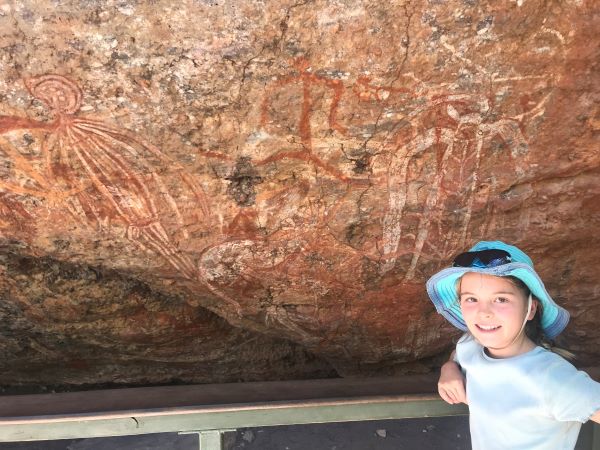
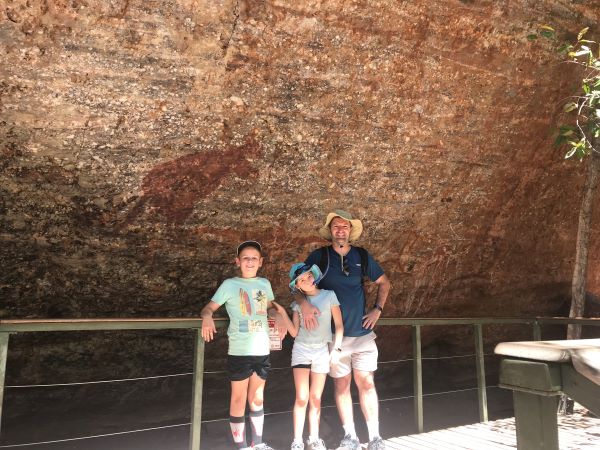
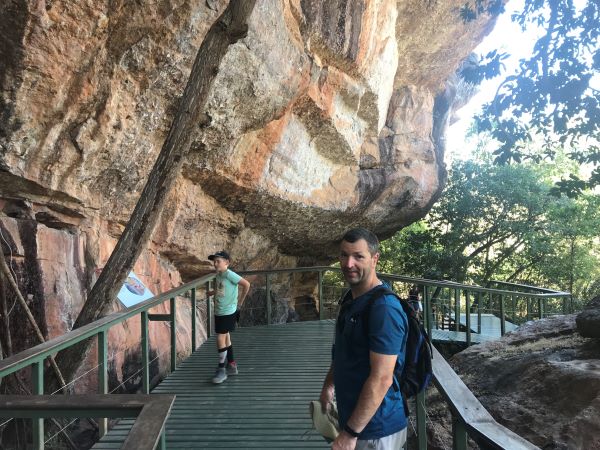

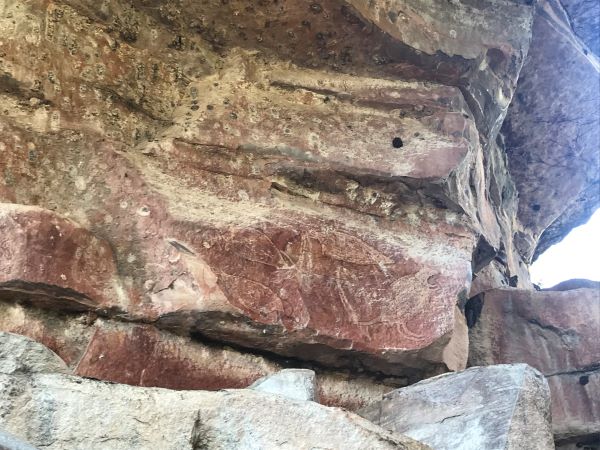
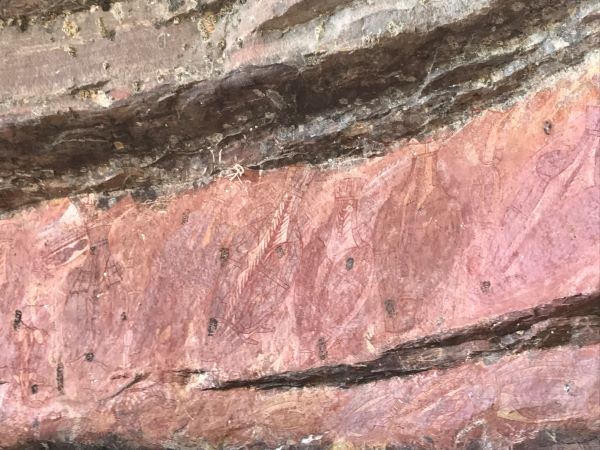
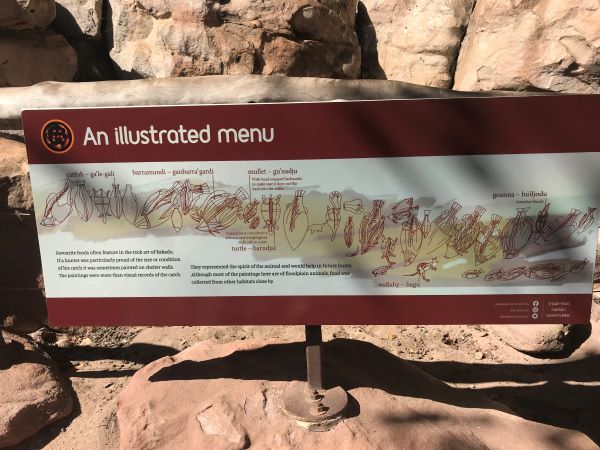
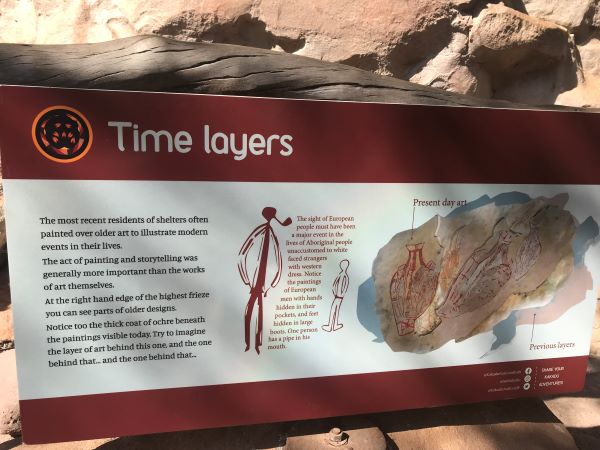
We climbed to the top of Ubirr rock and were rewarded with a great view over Kakadu.
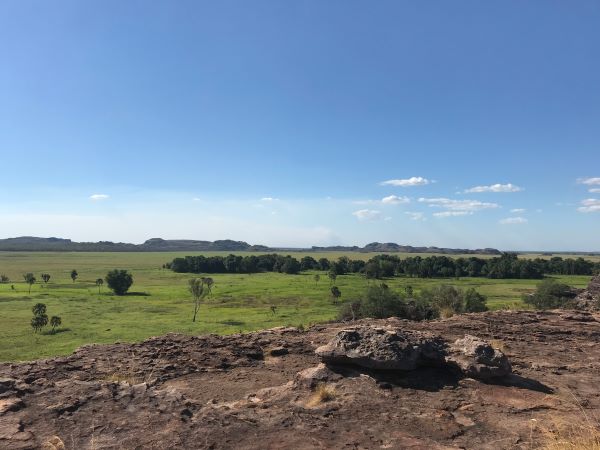
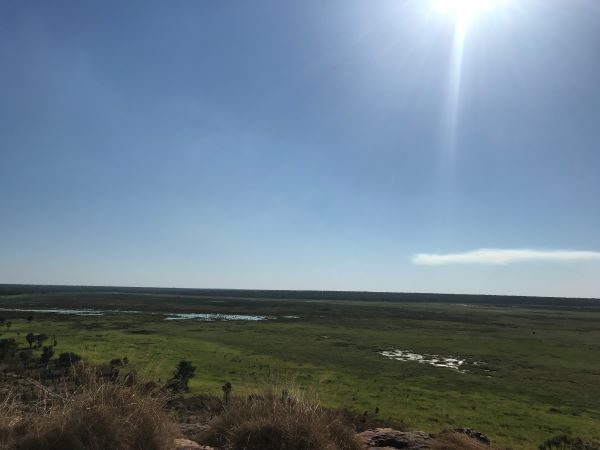
Wetlands
The other thing that Kakadu National Park is famous for is its wetlands. We visited during the dry season so the wetlands weren’t as “wet” as they are during the wet seasons, but there was still some life (and crocodiles) at the wetlands.

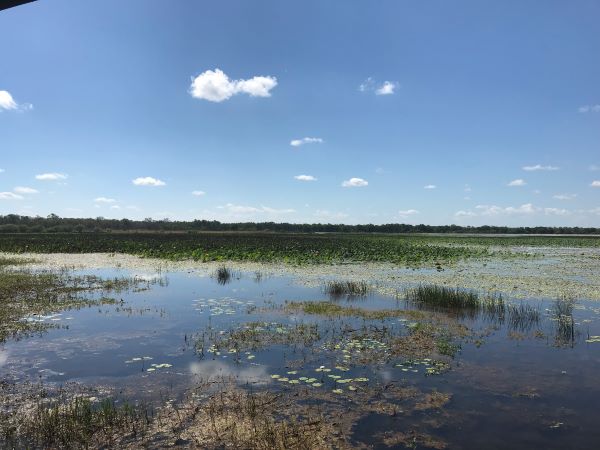
Jim Jim Falls
We decided to take a 4 wheel drive trip to see Kakadu’s most famous waterfall. The road promised several river crossings (all dry) and a fun track (59kms each way). The drive really was beautiful even if the rivers were dry.

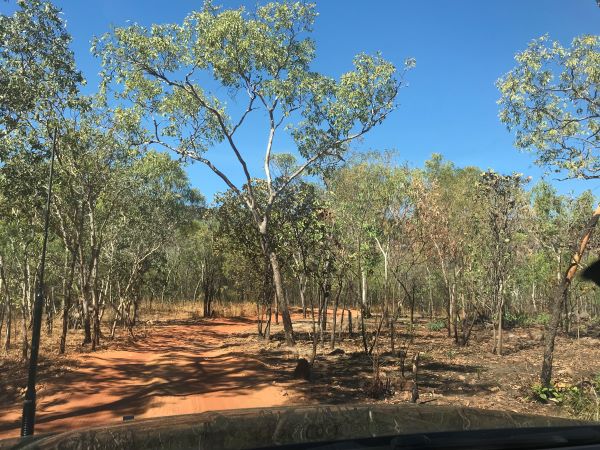


Once we arrived at the parking lot, we needed to do a 1 hour walk (mostly rock climbing over boulders) to reach the waterfall and plunge pools. The walk was fairly difficult – not just because you are trying to clamber over boulders without falling (not possible) but also because it was around 40C (105F).

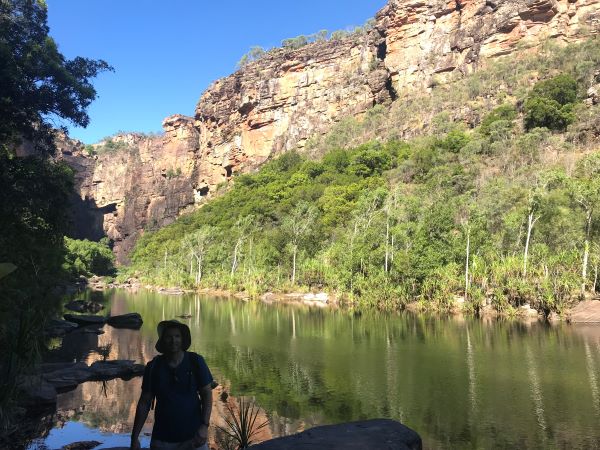
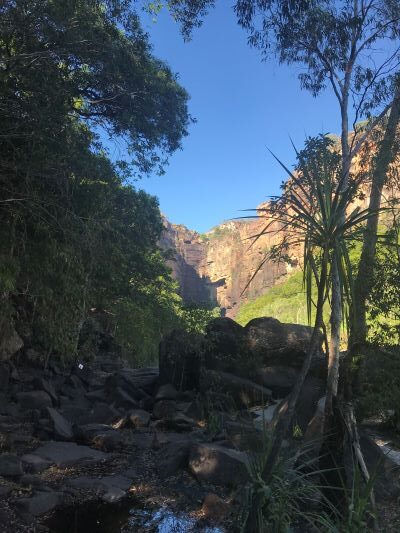
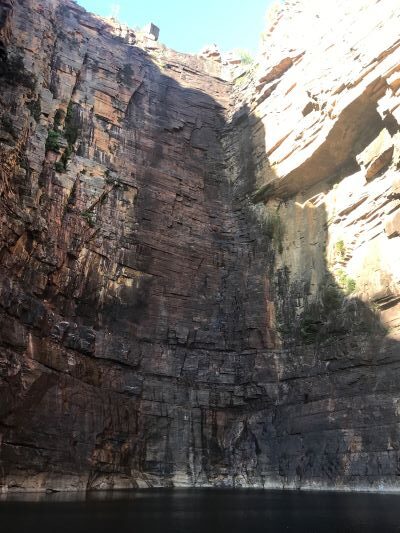
As you can see from the last two photos, when we finally got to the end, there was no waterfall! All dried up! I was a bit disappointed since I was expecting this (from NT news):

But, we went for a nice swim anyway in the cold water. Then, we had to scramble over the boulders all the way back to the car…
After Kakadu, we stayed for a week at Tumbling Waters, and during that time we spent a day visiting Darwin and a day at Litchfield national park. Tumbling Waters was very close to Berry Springs so we went there as well.
Darwin
In Darwin, we went to 2 museums (The Royal Flying Doctors Service and the Northern Territoritory Art and Cultural museum). The highlight was definitely the Bombing of Darwin permanent exhibit at the Royal Flying Doctors Service (seems strange to be located there). The exhibit had movies, a simulated air raid and a virtual reality experience on what it was like to be on a boat in Darwin harbour when the Japanese bombed it during WWII. The museum also had a very small part of it dedicated to the Royal Flying Doctors Service including a plane, but it was nothing compared to the much better RFDS museum in Dubbo that we went to.

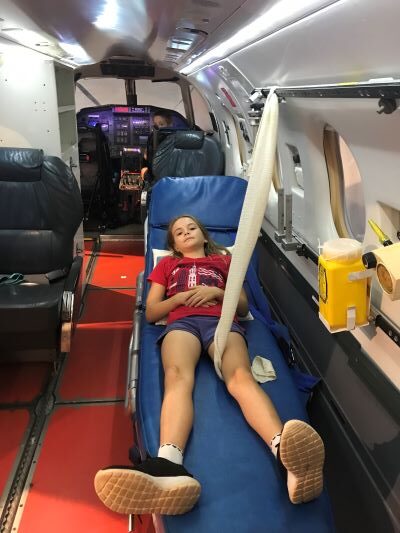
We had lunch on the wharf where the museum was and then walked around the downtown area and park overlooking the harbour.
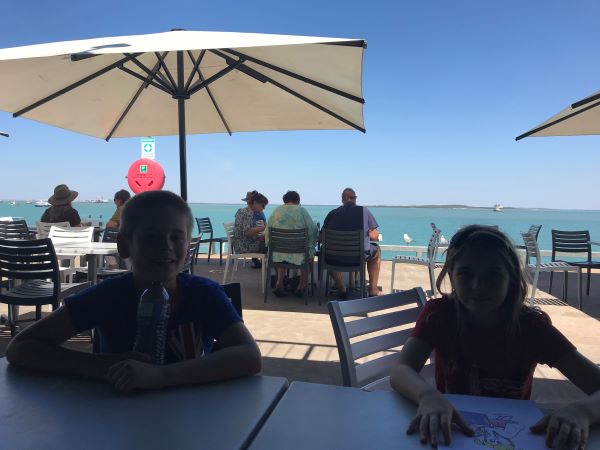
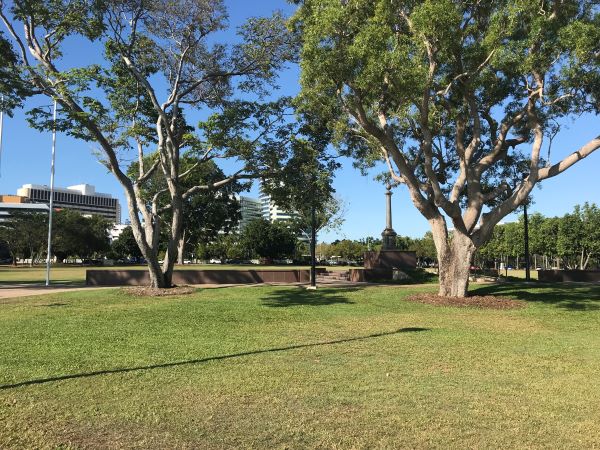
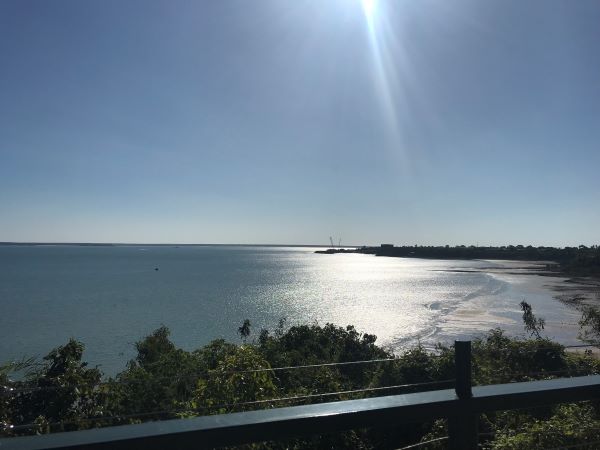

Darwin is kind of a nice city, but for me, the climate makes it unlivable. (And we were even there in ‘winter’ and the best season when the humidity is ‘low’.)
Litchfield National Park and Berry Springs
Litchfield National Park is definitely our favourite national park in Australia! What a great place! Mostly we went from one beautiful swimming spot to the next, but when we first arrived at the park, we went to see the famous Magnetic Termite Mounds which are everywhere and enormous!



When it is so hot out, it’s relief to be able to swim in cool water in amazing places and Litchfield has tons of them! We were initially going to visit 5 swim spots, but had so much fun that we only went to three in the end: Florence Falls, Buley Rockhole and Wangi falls. Florence falls and Wangi falls were both plunge pools at the bottom of waterfalls, but Buley Rockhole (the kids favourite) was a series of cascades and pools one after another (the photo below is only one of the pools).

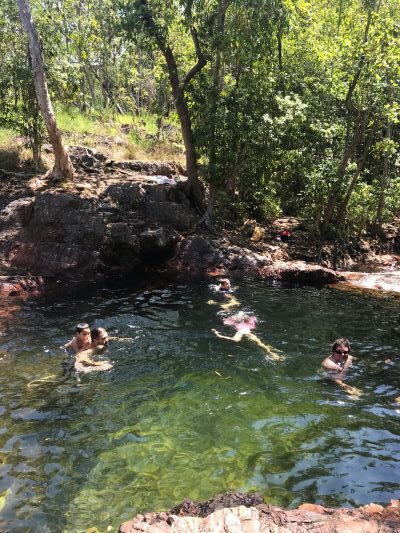
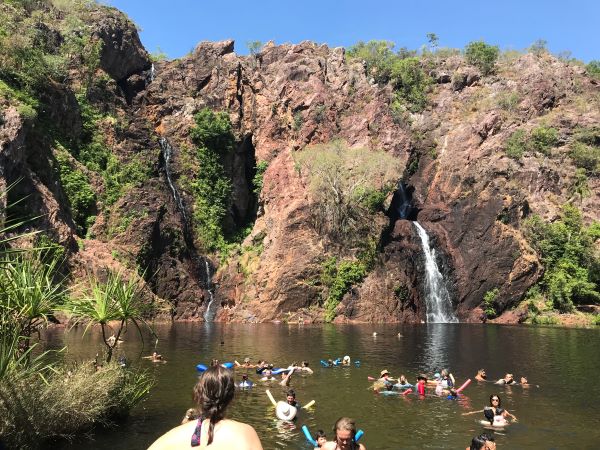
In the town near our caravan park there was also a swim spot – Berry Springs. So, on our last day in the area, we decided to go there to check it out and have an afternoon swim. The area had several different swim pool areas and a little creek that you could float down that connected one pool to the next.


The caravan park we stayed at in Tumbling Waters had a freshwater crocodile reserve. There were apparently 4 crocs in there, but we only saw 2. On Saturday evenings, they feed the crocodiles. The kids each got to the feed the crocs raw chicken pieces. (see if you can spot both crocodiles and a turtle in our daughter’s photo).
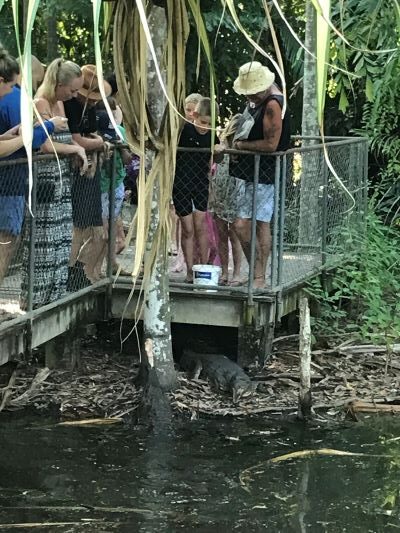

After that, we headed back to Katherine for another week or two. We’re waiting for a parcel and then we’ll attempt to get approval for a border pass to go to Western Australia.
Discover more from Kids Travel World
Subscribe to get the latest posts sent to your email.

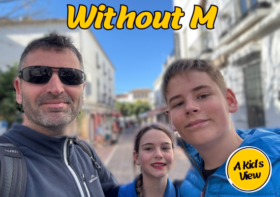


Lena
Amazing! I love the part about the aboriginal art- so very interesting . And the Berry Springs look beautiful! You’re doing such a great job of the blog, Cayden ! We have enjoyed reading your adventure, thus far . We miss you guys and take care out there in the heat xx Lena , Kel, Atanas and Amaia .
Isla
Can’t wait too see your next blog, gives us something to read in lockdown.
Can’t wait for you to come back!
Isla xx